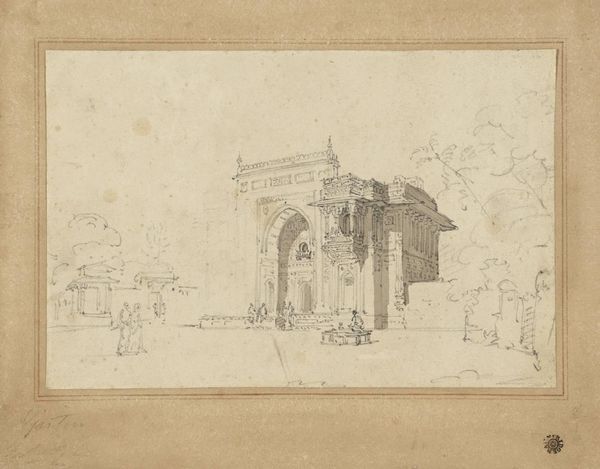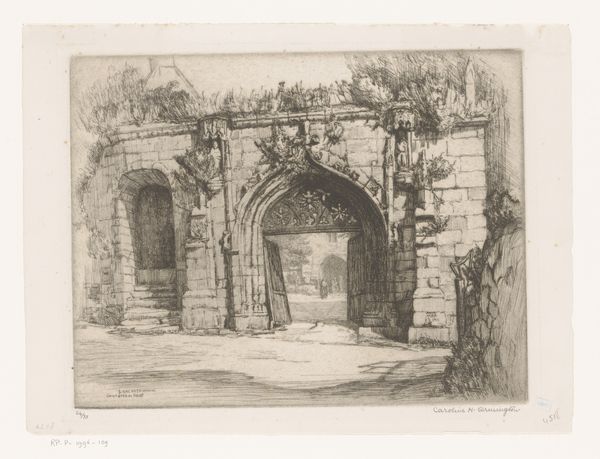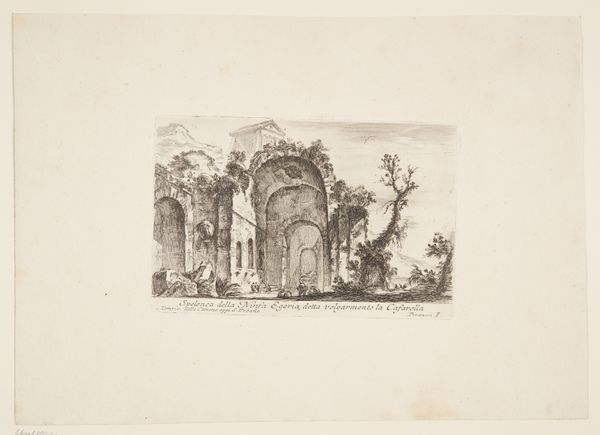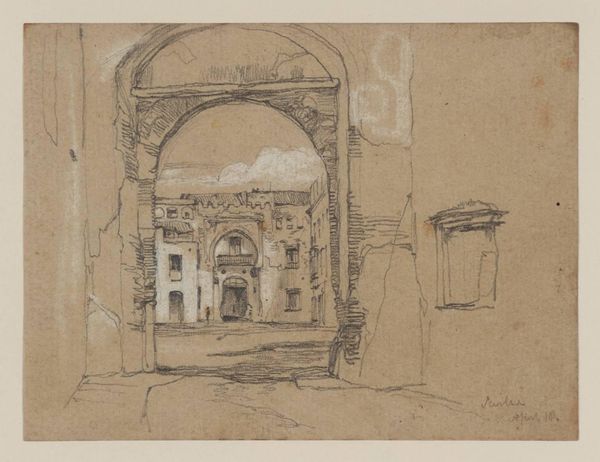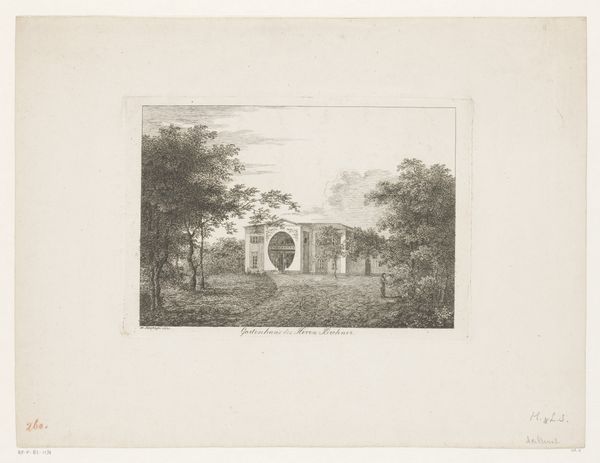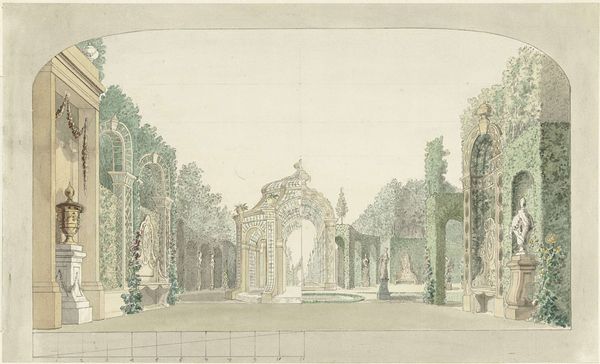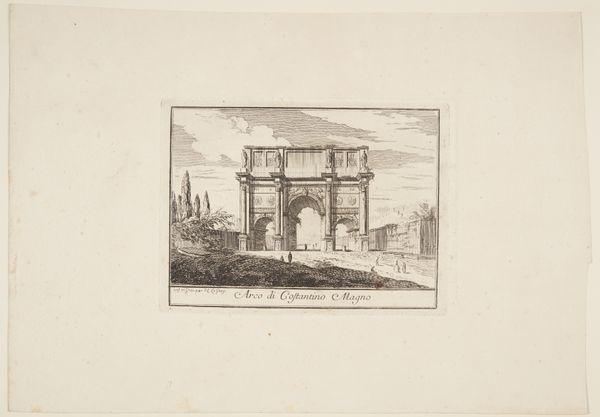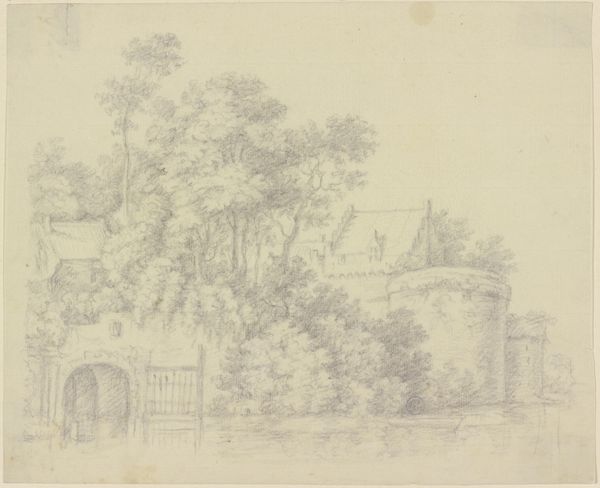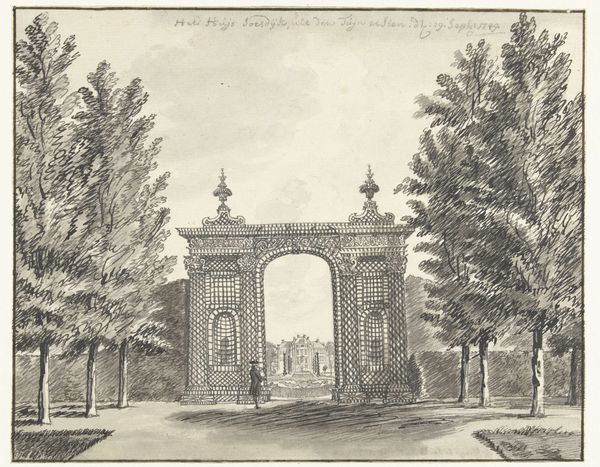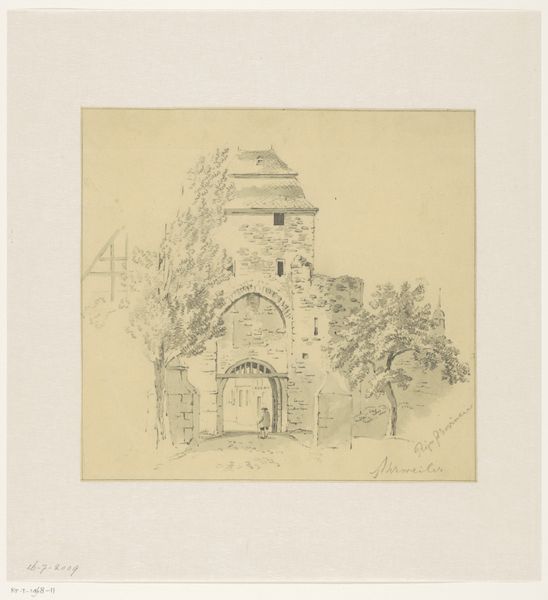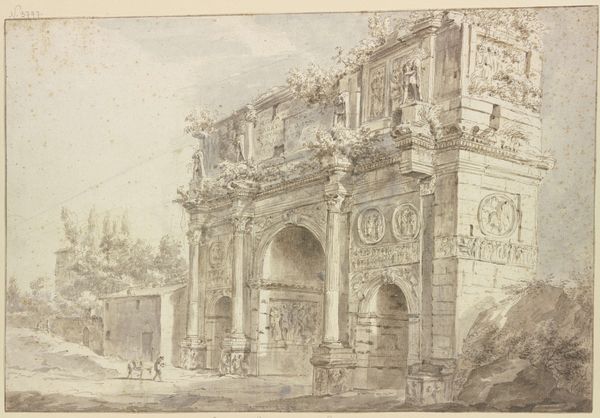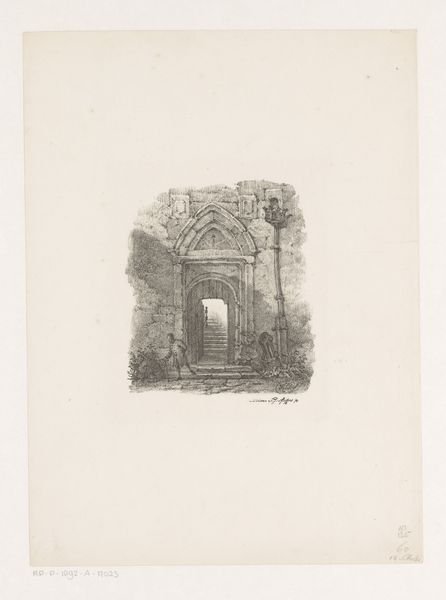
drawing, watercolor, pencil, architecture
#
drawing
#
landscape
#
watercolor
#
pencil
#
watercolor
#
architecture
Dimensions: height 230 mm, width 338 mm
Copyright: Rijks Museum: Open Domain
Curator: It has such a muted palette, almost dreamlike. What are we looking at exactly? Editor: This is “Huis op een steiger” a work whose creation is dated sometime between 1834 and 1893, attributed to Willem Anthonie van Deventer. It is done in watercolor and pencil on paper. Curator: So we’re seeing what, a house… on a jetty or pier? There’s an archway or gate that looms large in the composition. Do you get a sense that the artist intended for that threshold to hold significant cultural weight, a demarcation between land and water, past and present? Editor: That's interesting, but I’m mostly struck by the context – or rather, lack thereof. Who would live in a house like this? Where would such a structure even be found? It defies easy categorization and speaks more of a fleeting observation rather than some grand societal claim. Curator: Perhaps, but look closer. That arch, those carefully rendered stones. They evoke classical architecture and a sense of enduring power. The doorway, although unembellished, may serve a metaphoric threshold, suggesting potential passages to something unseen, beyond material structure. And Van Deventer places a lit street lamp adjacent to an area where a pedestrian might dwell, perhaps speaking to modern progress. Editor: I’m less convinced about reading that kind of loaded intention into the streetlamp—there's not even any attempt at dramatic illumination or any artificial enhancement of the drawing's mood! Rather I think it offers just a common element in this artist's life during this period—so Van Deventer’s record here is mainly a slice of contemporary Dutch life. What’s intriguing is his particular manner of selection; and how he focuses the composition on the gate, its shadowed entry, versus what is plainly visible. Curator: Yes, but selection is key, isn't it? It shows, on the most basic level, what the artist deemed most important, right? Editor: And I still read this as more about an aesthetic decision—something to capture during an ordinary day rather than something that might point to larger societal or even psychological import! But you make me consider all that the symbol may represent. Curator: Which underscores art's remarkable capacity to prompt varying reactions based on individual interpretations. Editor: And to offer value depending on what the audience extracts, even in everyday scenes from daily life, as depicted in this evocative Dutch landscape!
Comments
No comments
Be the first to comment and join the conversation on the ultimate creative platform.
